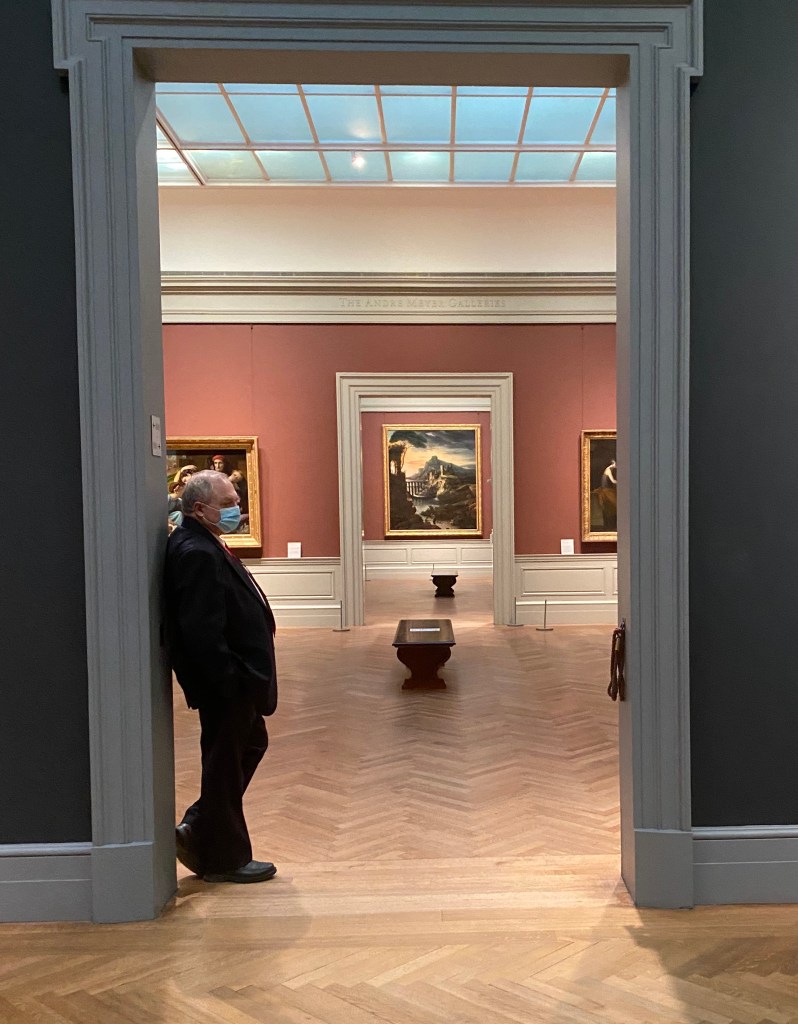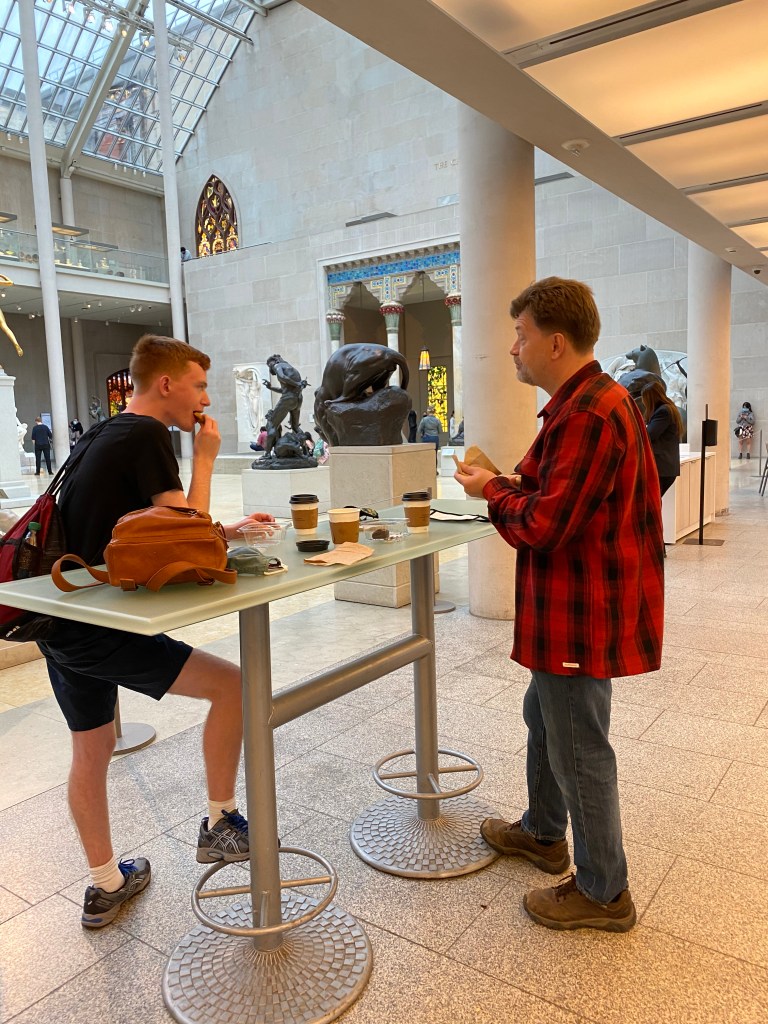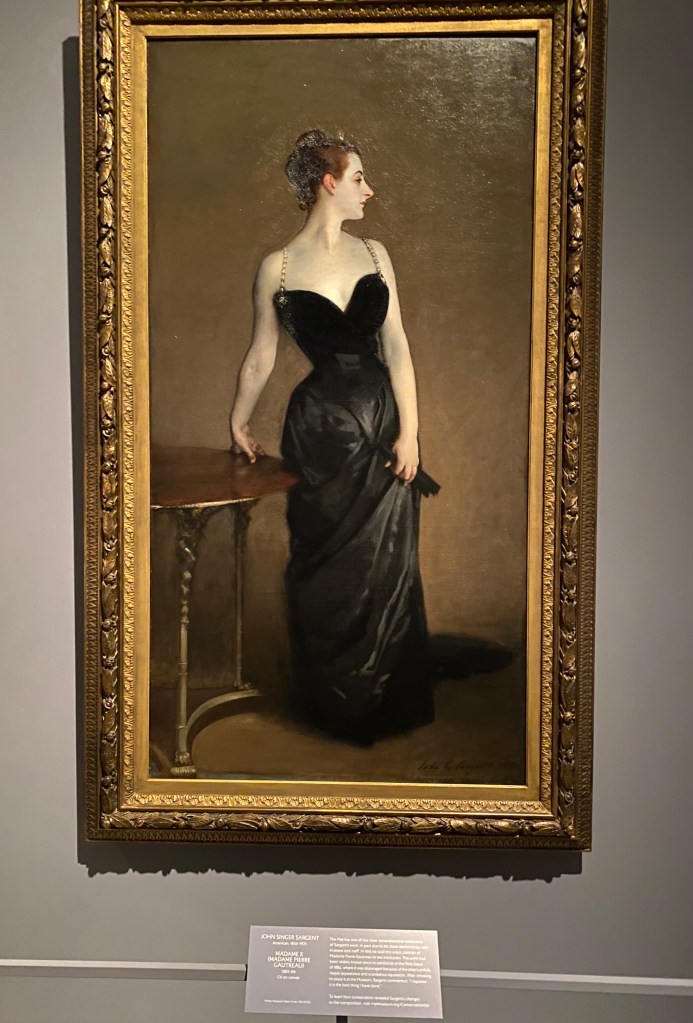
In normal times, we visit New York City regularly on weekends for museums, restaurants, and concerts. Since COVID, we have crossed the George Washington Bridge only a handful of times. Last Sunday, we visited the Metropolitan Museum of Art for the first time since last February.
We are museum people. My dream retirement job is to be a volunteer museum docent, who takes groups of people through the galleries giving little lectures on Rothko or Manet. I’m an art geek. If we lived closer, I would see every free lecture and attend every music night. Sigh. I hope that dream isn’t dead.
When we went on Sunday, the place was empty. There were more security guards than paying patrons. It was oddly depressing and glorious at the same time. The three of us were often the only people in the room. There were no foreign tourists, no groups of school children. There weren’t even many New Yorkers, because all my city friends are afraid to leave their neighborhoods.
Here are some of my pictures from that day…








Our college pool is nice and empty, much to the delight of my husband and 8-year-old.
LikeLike
Of all the things we mjiss about NYC since our move to St Louis 20 years ago, it;s the Met–we’re still members–we last visited when the Modern Language Association met in New York a couple years ago. I would have been like you, scared and thrilled–to have so much art to ourselves. We used to take our daughter to kids’ art classes on Fridays nights there when we were stationed at West Point–we went to a concert a month at the Met, too. We spent every weekend we were at the Military Academy in the city. I hope you can return soon and often.
LikeLike
At least the Met is open. The NYPL sadly is not.
LikeLike
Yeah, I’d be interested in your perspective on how libraries have managed during the Covid crisis.
From my perspective, they’ve been super-cautious about opening, and reluctant to run hands-free services (e.g. kerbside pick up, or click and collect). Of course, they have online services available – which answer about 30% of my reading needs (I read a lot of older non-fiction which is rarely available online).
I wonder if it is that they are a highly unionized workforce (like teachers), or that they have little or no requirement to bring in revenue (unlike museums like the Met).
I don’t see that they are doing themselves a lot of favours in positioning themselves as indispensable. And that is going to come back to bite them, when cities have the inevitable budget crunch (less revenue coming in, means less to allocate).
LikeLike
Our local TX libraries are now doing both normal indoor service and curbside pickup. They require masks indoors and limit computer use to no more than 1 hour a day. City-wide, library hours are 10-6 Monday-Friday–no weekend hours at all.
Early in the pandemic, the curbside service was extremely generous and fast and you could put 10 books on hold per account. They’ve since cut that down to 5 books on hold and online ordering service has also noticeably slowed down. I suspect that’s because they are now letting returned books “air” out, which slows everything down.
The slow-down led me to start doing indoor library visits, because the trickle of books from online ordering just wasn’t good enough. I have an unpaid gig as our 2nd grader’s personal librarian, as she needs to be kept supplied with physical books.
I’ve been to the library more over the last 6 months than I’ve been in the past 30 years.
LikeLike
I know that last painting. Because of scandal, he had to redo the shoulder strap on her right. That’s why it doesn’t look right.
LikeLike
One of my favorites… https://www.metmuseum.org/art/collection/search/12127
LikeLike
Empty and emptyish museums are one of my favorite spaces and have seen many museums nearly empty. Not the Met, I think, but I have been at a nearly empty MoMA, Art Institute, National Gallery. And, we always search out the less attended museums in other cities. The Cité de l’Architecture et du Patrimoine in Paris is fabulous and was almost empty when we went in the middle of summer travel season. The
It’s harder to time the popular museums to enjoy them empty these days than it used to be, but there are still a number of museums that you can see in empty rooms if you time properly. The American Art Museum/Portrait museum in DC used to regularly be one, but it has gotten more popular.
Going to museums to take instagram pictures has become a thing among the instagram crowd, making museums more crowded.
LikeLike
And, I hate crowded museums. The Temple of Dendur room at the Met I still remember with horror and the Viking museum in Oslo was pure hell.
LikeLike
Next time I go to Rome, if there is a next time, I will pay whatever it takes to go to the early tour of the Vatican Museum. I loved the Gallery of Maps and was so excited to see the Raphael Rooms, especially the Battle of Milvian Bridge and the School of Athens, but wow, it was like being on a bus in central Moscow.
My librarian friend tells me that some important library person or group decided that books need to sit 72 hours or something before anyone can touch them. This decision must have been made way back in March or April, but it influenced our school library’s decision not to allow us to leave books on physical reserve for students to use – a huge issue, since we’ve been encouraged for years to do this, in order to help them save money if they can’t buy them. Apparently most university libraries are following this practice.
LikeLike
I don’t like exhibits that are so crowded you have no time to really look at the items on display. That means we usually skip the ballyhooed exhibits, to visit the long-time treasures, such as pieces from the ancient world and the permanent collections.
It kills me, though, to know how many pieces are kept by museums, but out of the public’s view. It seems to me it would make sense to start satellite museums, to put some of those pieces on display. But then again, that would take money…
Did you know that the rules restricting a museum’s ability to deaccesion items have been temporarily suspended, due to covid? (http://www.culturalheritagepartners.com/updated-will-aamds-new-guidelines-on-deaccessioning-and-the-use-of-restricted-funds-change-the-way-museums-handle-their-collections/)
The second temporary change—and the one garnering the most attention—allows museums to use proceeds from the sale of deaccessioned works to support direct care of collections; previously, AAMD permitted museums to use such funds only to purchase additional objects.
The museums can also tap restricted funds for operating expenses. It remains to be seen whether any museum directors choose to take the hit of selling pieces from the collection to keep things going. It’s a fraught time.
However, if you have the money, there might be a flow of remarkable items to the auction block.
LikeLike